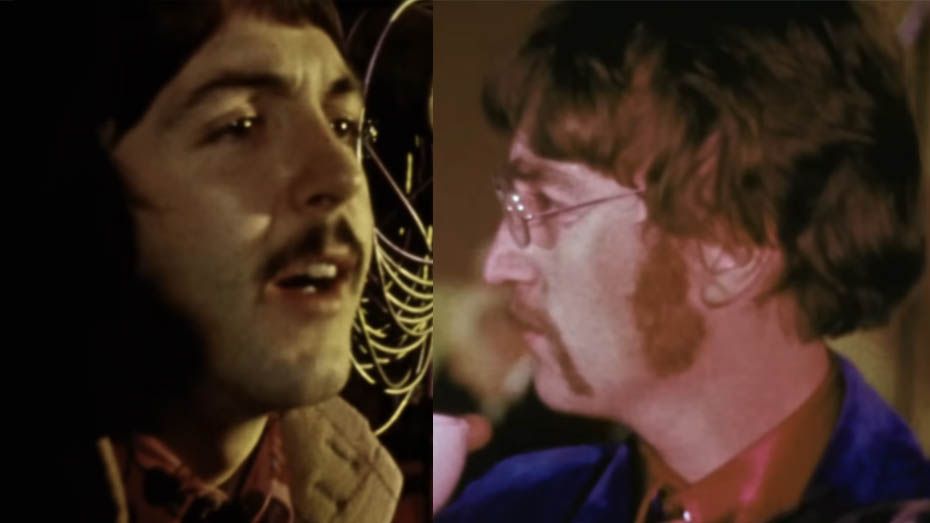"They Joined the Two Bits Together to Make One Song": The Story of the Greatest Beatles Recording

The Creation of A Day In The Life: A Masterpiece of Innovation and Collaboration
On the morning of Thursday, 19 January 1967, The Beatles gathered at Studio One of EMI Studios Abbey Road to begin recording what would become one of their most iconic songs: A Day In The Life. This track, now considered by many as their greatest composition, was a groundbreaking achievement that pushed the boundaries of what was possible in music production at the time.
As the closing track on the Sgt. Pepper’s Lonely Hearts Club Band album, A Day In The Life needed to be something extraordinary—nothing else could follow it. When the final, massive E major piano chord crescendo is played simultaneously by Lennon, McCartney, Ringo Starr, and roadie Mal Evans (along with producer George Martin on harmonium), it marks an emotional and unforgettable conclusion to one of the most significant songs in music history.
The creation of A Day In The Life can be seen as two separate yet intertwined stories: the writing of the song and the technical challenges involved in bringing it to life. It all began on 18 December 1966 when John Lennon sat down at the piano at his home, Kenwood, in Surrey. He had read two articles in The Daily Mail that inspired the lyrics for the song. One was about Tara Browne, a 21-year-old millionaire and friend of Paul McCartney, who died in a car crash. Another was about potholes in Blackburn, Lancashire.
Lennon started composing a chord sequence and the lines began to form. “He blew his mind out in a car/He didn't notice that the lights had changed/A crowd of people stood and stared…” As he worked, the song took shape, and by mid-January, the melody and most of the lyrics were written. Lennon then went to McCartney’s house in Cavendish Avenue to present the song.
In his book The Lyrics, McCartney recalls that the opening lines were actually a joint effort. He also contributed the pivotal line, “I’d love to turn you on.” According to Lennon, the pair often collaborated, with each taking turns adding to the song. “Paul and I were definitely working together, especially on A Day In The Life,” Lennon said in a 1970 interview.
When Lennon first sang the song to the band in the studio, they wanted to record it immediately. At that point, the song had the working title of “In The Life Of…”, and it featured Lennon on piano, McCartney on Hammond organ, George Harrison on acoustic guitar, and Ringo Starr on congas. They recorded four takes of the rhythm track before switching instruments.
Despite the progress, there was one major obstacle: a 24-bar gap in the middle of the song that they didn’t know how to fill. They decided to leave the space blank and figure out what to do later. Mal Evans was tasked with counting off the bars during the recording and setting an alarm clock to signal the start of the 24th bar. However, the engineer, Geoff Emerick, couldn’t eliminate the sound of the alarm from the mix.
Lennon wasn’t sure how to proceed with the song. “For the first bit, [John] said to me, ‘I don’t know where to go from here,’” recalled George Martin. McCartney suggested using a different section of his own work, which ended up becoming the middle part of the song.
McCartney’s section was upbeat and bouncy, and its lyrics coincidentally matched the sound of the alarm clock. “Woke up, got out of bed/Dragged the comb across my head” became a key part of the track. Lennon proposed creating something that started small and grew into something huge, and McCartney agreed, suggesting they use a full orchestra.
George Martin initially thought EMI wouldn’t pay for a full orchestra, but Ringo suggested hiring half an orchestra and having them play the section twice. The orchestral segment was recorded on 10 February 1967 in Studio One, with Martin and McCartney conducting a 40-piece orchestra. The total cost of the session was £367, which was considered extravagant even for a Beatles recording.
Martin wrote a unique score for the orchestra, instructing them to play from the lowest note to the highest, with a squiggly line indicating their progression. The session was a psychedelic event, with guests like Mick Jagger and Marianne Faithful in attendance.
The recording process presented further challenges, including the need to run two four-track tape machines together. Ken Townsend developed a method to synchronize the machines, and it worked perfectly on the first try.
On 20 January and 3 February 1967, the track was refined with additional overdubs and remixing. Ringo re-recorded his drum parts, and the final overdub was the climactic piano and harmonium chord, recorded on 22 February 1967.
By then, those present knew they were witnessing a historic moment in music. David Crosby of The Byrds was among the first outsiders to hear the song, and he was left speechless. Ron Richards, a producer at EMI, was equally stunned.
Sgt. Pepper’s Lonely Hearts Club Band was released on 26 May 1967, and A Day In The Life became the album’s closing track. Critics praised the song, calling it “a deadly earnest excursion in emotive music with a chilling lyric” and “an historic pop event.”
Almost 60 years later, A Day In The Life is still regarded as The Beatles’ greatest song. It captures the essence of everyday life while contrasting it with the extraordinary, showcasing the combined brilliance of the band.
Post a Comment for ""They Joined the Two Bits Together to Make One Song": The Story of the Greatest Beatles Recording"
Post a Comment